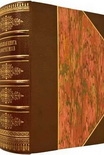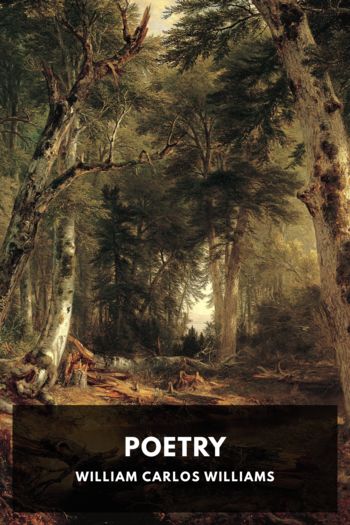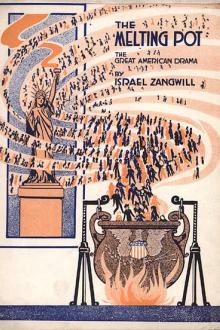No Modernism Without Lesbians, Diana Souhami [love books to read txt] 📗

- Author: Diana Souhami
Book online «No Modernism Without Lesbians, Diana Souhami [love books to read txt] 📗». Author Diana Souhami
In 1909, aged fifty-two, seven years after Albert’s death, she married Christian Hemmick, her ‘pink pet’ she called him, the male lead in many of her productions. He was twenty-two, bleached his hair and fancied young male dancers. Natalie asked her mother why, after a ghastly first marriage, she wanted to tie herself to another man, particularly a pederast. Perhaps it was not Natalie’s place to question unorthodox behaviour, given her display with Liane de Pougy and half the lesbians of Paris. Her sister, Laura, thought that Hemmick was after their mother’s money. As a precaution, before the ceremony, Alice assigned her properties to her daughters.
Christian Hemmick was not an ideal husband. Alice was always busy, while he fooled around. She wrote cheques to him and financed his enthusiasm for dubious business ventures. For one project – the making and marketing of scented household cleaning products – he took stuff from the scullery, mixed it with Alice’s perfumes and designed labels for the jars. She set him up in an office but instead of working, he wrote letters on scented notepaper to young men.
Natalie castigated her mother for her lavishness to this ‘worthless boy pederast husband and the thousands of dollars wasted on him’. By 1918 Alice wanted a divorce. Hemmick objected that he was Catholic and marriage a divine contract. When she learned he was having an affair with the dancer and artist Paul Swan, dubbed ‘the most beautiful man in the world’, she told him the marriage was over and she would be writing no more cheques. She reverted to being Mrs Barney.
the temple of friendship
For her part, Natalie, freed from her father’s pressure to conceal her lesbian identity and rich in her own right, consolidated her Paris life.
In 1909, aged thirty-three, she rented 20 rue Jacob. The house became her home for sixty years. In its garden was a small eighteenth-century pavilion with, carved above its entrance, the dedication À L’AMITIÉ, and in this pavilion, which Natalie called her Temple of Friendship, her famous or infamous salons began, held between the hours of four and eight on Friday afternoons.
These afternoons evolved into a showcase for artistic innovation. ‘I didn’t create a salon’, Natalie wrote, ‘a salon was created around me.’ Her initial hope was for French, American and English writers to meet and disseminate new writing and ideas beyond national boundaries, but over time these meetings took on their own life. Paul Valéry called the gatherings ‘the hazardous Fridays’, they became so unpredictable.
‘The universe came here’, wrote the French writer Edmond Jaloux, ‘from San Francisco to Japan, from Lima to Moscow, from London to Rome.’ Natalie’s visitors were drawn to the cutting edge of art, the conversation, the strawberry tarts and the prospect of finding lovers and friends.
The word got round, and among a roll call of lesbians were Gertrude Stein with Alice B. Toklas; Sylvia Beach and Adrienne Monnier; Janet Flanner and Solita Solano, who was drama editor of the New York Tribune; Bryher and H.D.; Colette, Djuna Barnes, Romaine Brooks, Nancy Cunard, Liane de Pougy, Olive Custance, Lily de Gramont, Lucie Delarue-Mardrus, Mimi Franchetti, Radclyffe Hall….
Visitors spilled from the Temple into the garden and then the ground-floor dining room, its walls covered in red damask, the domed ceiling painted with nymphs, its furniture haphazardly acquired: an Empire couch, Spanish chairs, portraits on the walls of Natalie’s lovers painted by her mother, Lalique lamps sculpted as bouquets of roses, photographs of friends framed in gold and tortoiseshell: Apollinaire, Proust, Gide, Picasso, Cocteau, Sarah Bernhardt, Stravinsky, the Queens of Spain and Belgium, Nadia Boulanger, Greta Garbo with Mercedes de Acosta… On an oval table at the room’s centre were a tea urn, glass pitchers of fruit juice, triangular sandwiches and little cakes from Rumpelmayer’s.6 On a side table were port and whisky. Natalie’s famous housekeeper, Berthe Cleyrergue, did not arrive until June 1927.7 Before her, domestic helpers came and went. Natalie said she preferred them ‘a little blind and deaf’. Berthe did not speak English.
As a frontispiece to her publication Aventures de L’Esprit, Natalie doodled a calligram in the style of the poet Apollinaire. It showed the pavilion with L’AMITIÉ scrawled across its doors leading to the garden and dining room, and crowded into and spilling out of every space were the handwritten names of the visitors to her Fridays. It was a roll call of modernists – French, American, English – who all contributed to new ways of expression in the decades before the Second World War. Making threads of connection, drawing these disparate names together, weaving in and out among them was their host, Natalie Barney. The Amazon.
Remy de Gourmont, symbolist poet, novelist and critic, gave her the Amazon soubriquet. De Gourmont was in his fifties when they met. His face was ravaged by lupus and Natalie described his clear blue eyes as like ‘two children living in a ruin’. Fortnightly from January 1912 until October 1913 he published a letter, written ostensibly to Natalie, in the Mercure de France – ‘Lettres à l’Amazone’, he called these essays. In them, he extolled her and the thoughts and feelings she inspired in him. He said whenever he saw her, he felt a quickening of his heart. ‘If I dared I would have you read everything I write,’ he told her. For him, she encapsulated the exuberance of the new.
Natalie, however daunting her sex life, was true to her dedication to l’Amitié. In 1966, aged ninety-one, still straight-backed and strong-faced, she described friendship as the most lasting virtue, ‘the most free of passing emotions’, sustained by loyalty and choice. ‘I’ve never given up my friends,’ she said. ‘They’ve given me up but I’ve never given them up.’
ladies with high collars and monocles
In the early decades of the twentieth century, literary lesbians from America and England left their home towns for Paris. News





Comments (0)